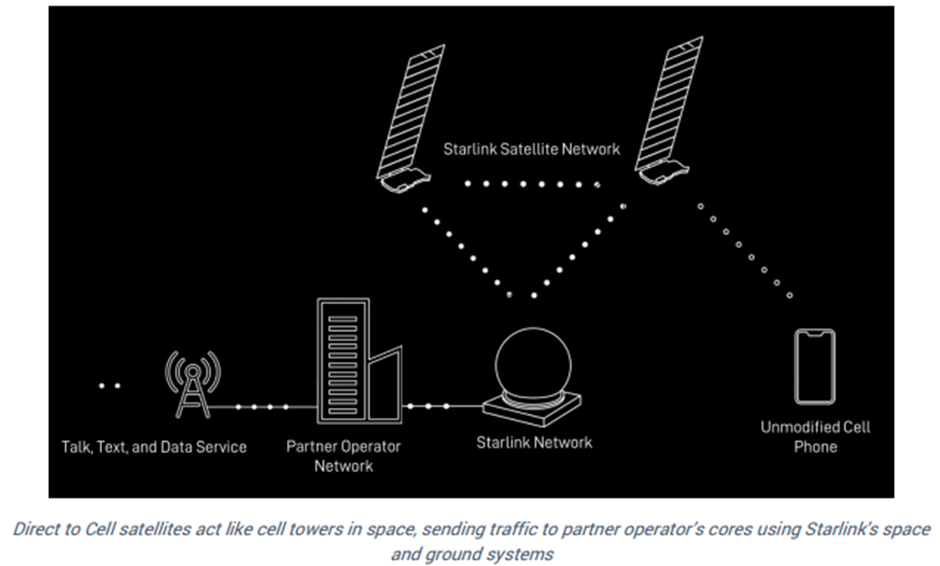SpaceX Starlink SMS – the final frontier?

In today’s world, staying connected with people is important no matter where you are. But in some places, it’s hard to get access to technology that lets you communicate with others instantly. That’s where SpaceX Starlink comes in. This project aims to use satellites to help people in remote areas connect with each other. In this blog, we’ll talk more about how this project will change the way we communicate with each other all around the world.
SMS works in most places but not all…
The first SMS was sent in 1992 and SMS volume decline has been wrongly predicted since about 2002. In the last 30 years, the market has grown and matured beyond anyone’s projections. Though SMS does start to face challenges now from data-based mobile comms like WhatsApp and RCS it remains worldwide the most widely used default means of communication for people due to its simplicity and ubiquity.
The infrastructure keeps improving and is based on many thousands of agreements between networks and aggregators so that almost anywhere in the world you can send and receive SMS on your phone as if you were in your home country.
The one constraint though, and we all know it can be significant, is that you need ‘signal’ from a cell tower or mast unless you have a special satellite phone – these are expensive to run and use satellites rather than mobile networks. Without a signal, you may need to ‘fall back’ on your internet connection or WiFi…
This matters since over half a million square miles of the US, vast stretches of ocean, and of course dead zones we all know of in every part of every country are unreachable by terrestrial network coverage.
Until now
So SMS has always had this limit but Elon Musk is about to upset the rules (not for the first time).
Since the SpaceX division began launching the first of its 5,000 satellites the focus has been on broadband in hard-to-reach areas. This has evolved with T-Mobile’s announcement last month that SpaceX’s Falcon 9 rocket has launched the first six Starlink satellites with direct-to-cell capabilities.
This year Starlink will begin offering SMS solutions in partnership with T-Mobile, with voice, data, and IoT services to follow in 2025. T-Mobile will allow Starlink to use its 5G spectrum while gaining access to the Starlink network, and thus securing near ubiquitous coverage in the United States.
Agreements to roll out direct-to-cell services have been made already with KDDI (Japan), Optus (Australia), One NZ (New Zealand), Rogers (Canada), and Salt (Switzerland). BT in the UK are in advanced talks with Starlink about rural broadband but it’s not known if they are also talking with T-Mobile about direct-to-cell.

This means that with your ordinary 4G+ mobile if your home network is one of these partnered networks or you are roaming in the above countries (and your network has a roaming agreement with them) will be able to send and receive SMS directly from space before long. The industry expectation is that SMS from space means we are now moving towards SMS black spots being a thing of the past worldwide on most networks.
What does the Starlink SMS project mean for you?
If you’re wondering what the Starlink SMS project is and how it can benefit you, here’s what you need to know:
If you are a marketer
If you’re a marketer, the Starlink SMS initiative can help you engage with your customers more effectively by diversifying your outreach and enhancing your return on investment and customer engagement. With SMS, you’re no longer limited by geography, and you can reach a wider audience more reliably.
This means fewer soft bounces and faster delivery in areas where connectivity is currently weak. In the long run, it will also improve the delivery of your emails and other data to mobile phones. It’s remarkable to see that SMS, which is now 32 years old, is leading the charge into space.
If you are an ARM customer
If you’re in the Accounts Receivable Management (ARM) sector, faster and more reliable SMS communication can improve your debt collection process and build stronger communication channels with your clients. The uninterrupted SMS connectivity through Starlink can also enhance operational efficiency and give you a strategic advantage.
If you are an ecommerce merchant
If you’re an ecommerce merchant, the advancements in SMS technology brought by Starlink can elevate your order processing, customer relationship management, and marketing campaign targeting.
Your customers can get updates on orders, promotional deals, and personalized recommendations from anywhere in the world, which can significantly improve their shopping experience, foster loyalty, and increase sales conversions.
Embracing a connected future
The Starlink SMS project represents an evolution in global communication rather than a complete revolution. With the help of satellites, people will be able to send and receive SMS from almost anywhere in the world, which can have a significant impact on various industries, such as marketing, ARM, and ecommerce. It will be interesting to see how this project evolves in the coming years and how it will shape the future of communication.



